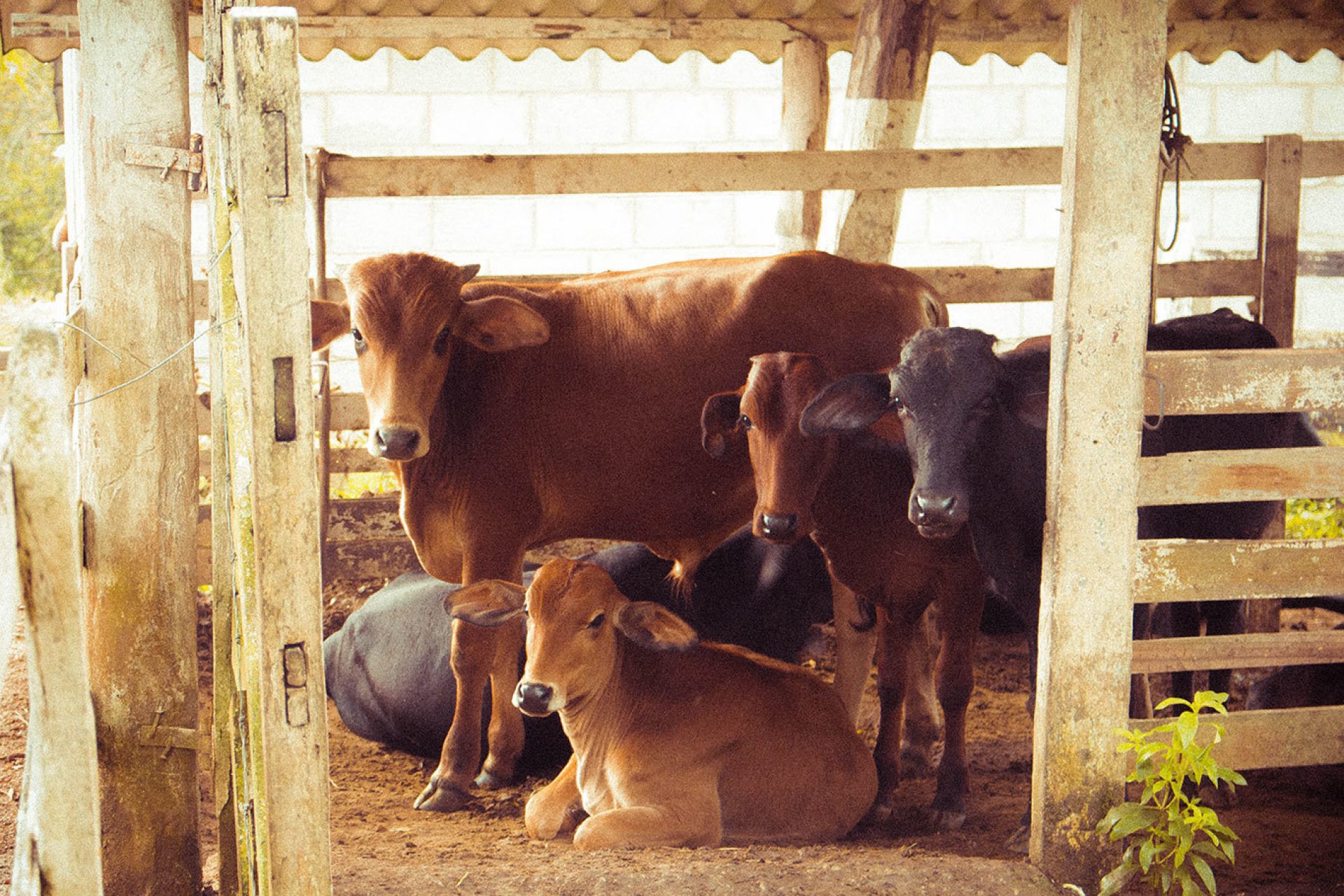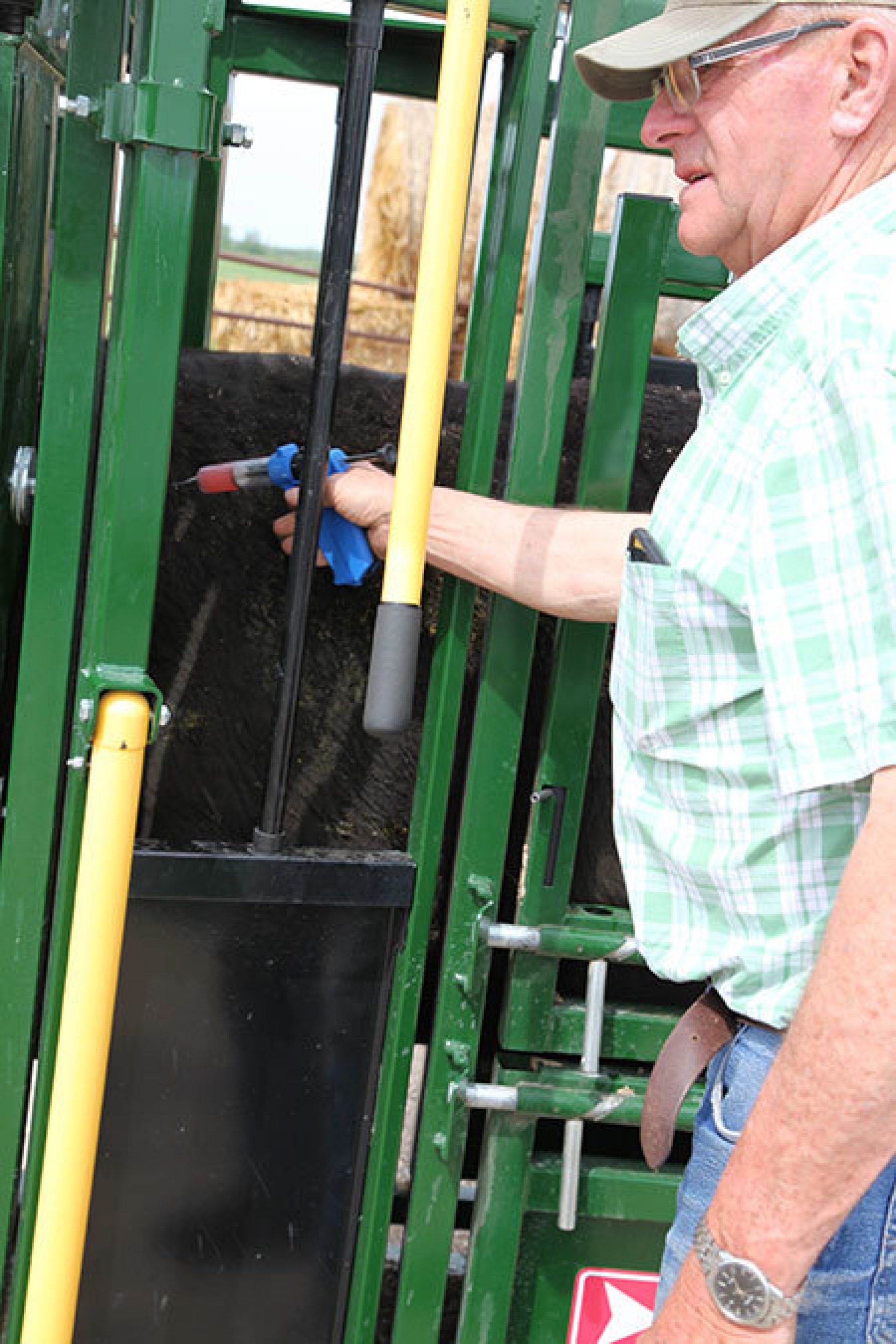Keeping Your Herd Healthy | Preventative Measures

"An ounce of prevention is worth a pound of cure" is a well-known statement that applies to personal health, and the business of livestock as well. Preventative measures pay for themselves in beef cattle production by reducing illness and improving growth rate in calves, and efficiency of their dams.
Herd health issues that you may face will vary depending on the location of your operation. Check with your veterinarian and other local producers to identify health issues that may affect your cattle. Your veterinarian can help you develop a herd health plan, and recommend preventative measures.
Nutrition, housing, sanitation, and regular observation are management principles that influence herd health. It is also important to practice biosecurity measures with sick cattle on your own operation, when introducing new cattle to your operation, with visitors, and friends that may come in to help you work your cattle. Bodily fluids from the cattle can contribute to the spread of disease within the herd, or to another herd if carried on our boots or clothing.
The foundation of animal health (including ours) is the immune system. The immune system identifies problems before we can see them. Many health issues are taken care of without any intervention from us, as long as the immune system is strong.
Stress is one of the biggest threats to the immune system. Cattle can face stress from multiple factors, including weaning, transport, heat, or feed changes, to name a few. The best way to keep the immune system strong and healthy is to reduce stress wherever possible, and feed cattle to support rumen health. The good bugs that live in the rumen are a key factor to a strong immune system.
Vaccines are an important component of preventative measures for herd health. However, they are not a cure-all. Vaccination must be part of a holistic approach to herd health in order to have maximum effectiveness. Scours is the perfect example. There is a vaccine for scours, but, environmental and management factors usually contribute significantly to scours as a herd health issue. Until environmental and management changes are made, the vaccine alone cannot eliminate the problem.
What can vaccines do? They increase resistance to the disease being vaccinated against. This also decreases the occurrence and severity of the disease if cattle are exposed to it. There are a few key points about vaccinating cattle that should be incorporated into the best management practices at your operation.
- Vaccinating cattle when they are stressed decreases the effectiveness of the vaccine.
- Vaccinating pregnant cattle will increase the immunity of the calf via colostrum.
- It is common practice to vaccinate cattle for 8-9 diseases. While vaccination is highly important, cattle are still susceptible to other diseases. This highlights the importance of a holistic approach towards preventative measures to keep the immune system strong.
- Booster vaccines are critical to effectiveness. Follow instructions on the label and from your veterinarian exactly. Refer back to the Beef Quality Assurance program guidelines if needed.
- If you are shipping calves to a feedlot, they should be vaccinated two to three weeks prior to shipment. Preconditioning should also be part of your preventative herd health measures for calves being shipped to a feedlot.
Your preventative measures for herd health likely focus on your operation. However, if you plan to sell cattle, or ship them to a feedlot to be finished, the preventative measures should include practices for this location, especially if it is in a significantly different geographic location, and vaccines that you normally wouldn't administer will be needed.
Preconditioning for calves moving to feedlots is an essential step in their success at the feedlot. Stages to the process include:
- Calves should be weaned 30 days prior to transport to the feedlot.
- Calves should be comfortable eating from a feed bunk and drinking from a stock tank prior to transport.
- Deworming for parasites after a fecal egg count has been completed should be completed in advance of transport.
- Vaccination for rhino and diarrhea, and others as directed by a veterinarian, again, prior to transport.
- Dehorning and castration are complete and healed.
- Ear tags are visible for easy animal identification and tracking.
Good nutrition is the cornerstone of your rumen health, and in turn supports the immune system. Test your forages to know the nutritional value it's providing your cattle, and balance your ration as needed with energy and protein. Supplementation of vitamins, macro and micronutrients may be needed depending on your location.
It is common for cattle producers and handlers to have a busy schedule. Despite having a hundred other things going on, you should aim to spend a few minutes each day examining your cattle, and treat any illness or injury before it becomes a major issue.
Correctly incorporating a vaccination schedule into your other preventative measures for herd health, including nutrition, housing, sanitation, and observation, is that ounce of prevention that can eliminate the need for a pound of cure on your cattle operation.
How to vaccinate cattle properly
Have you seen the needle access on the Q-Catch 74 Series?
References
A Preventative Herd Health Program: Checklist for Beef Producers - North Dakota State University
Beef Herd Health - Penn State Extension
Calf health and vaccinations are not synonymous - Beef Magazine
Control and Prevention of Disease in Feedlot Cattle - Merck Veterinary Manual
Health Management of Beef Cattle - University of Tennessee Extension






Comments
Join the Discussion
Comments